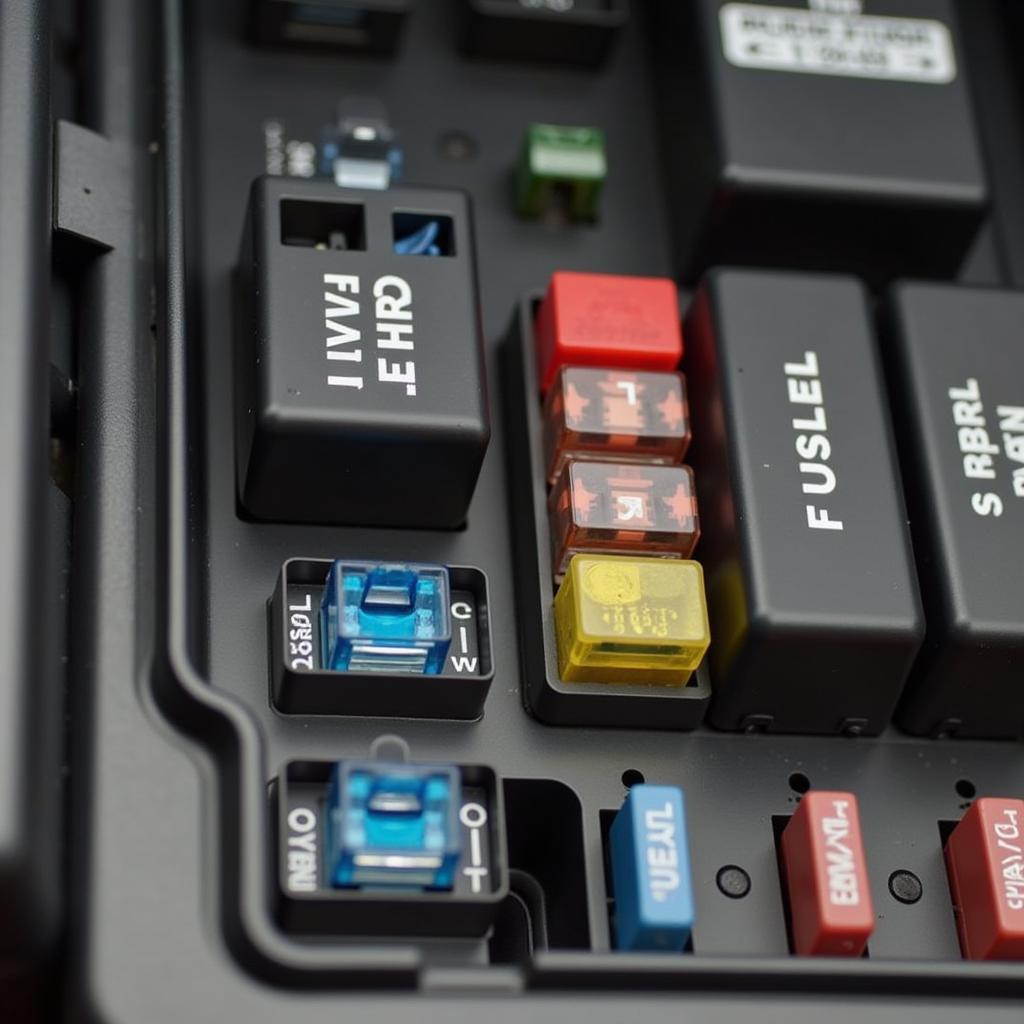If your 1996 Chevrolet S10’s brake warning lamp is illuminated constantly, it indicates a potential issue with your braking system. While this might seem alarming, don’t panic! This is a common problem with several possible causes, many of which are relatively simple to diagnose and repair. This article will guide you through identifying the culprit and offer potential solutions.
Understanding Your S10’s Brake Warning System
The brake warning lamp on your dashboard serves as a crucial safety feature, alerting you to potential problems within the braking system. When illuminated, it signals that a fault has been detected, and immediate attention is required. Ignoring this warning light can lead to reduced braking performance and increase the risk of an accident.
Common Causes of a Constantly Illuminated Brake Warning Lamp
1. Low Brake Fluid Level
One of the most frequent causes of the brake warning light staying on is a low brake fluid level. The brake fluid reservoir in your 1996 S10 is located on the driver’s side of the engine compartment, mounted on the firewall.
How to Check and Add Brake Fluid:
- Park your S10 on a level surface and engage the parking brake.
- Locate the brake fluid reservoir.
- Check the fluid level. The reservoir has minimum and maximum level markings. If the fluid level is below the minimum mark, you need to add brake fluid.
- Add the correct type of brake fluid. Your S10’s owner’s manual will specify the recommended brake fluid type, usually DOT 3 or DOT 4.
- Avoid overfilling. Add fluid slowly and carefully to prevent spilling.
- Check for leaks. If you need to add brake fluid frequently, you likely have a leak that needs to be addressed by a mechanic.
 Brake Fluid Reservoir
Brake Fluid Reservoir
2. Worn Brake Pads
Brake pads are designed to wear down over time. When they wear past a certain point, a sensor in the brake pad will contact the rotor, completing a circuit and illuminating the brake warning lamp. This serves as a clear indicator that your brake pads need replacement.
Note: Driving with worn brake pads can damage your rotors, leading to more extensive and costly repairs.
3. Faulty Brake Light Switch
The brake light switch, located under the dashboard near the brake pedal, is responsible for activating your brake lights when you press the pedal. A malfunctioning brake light switch can also trigger the brake warning lamp.
To check the brake light switch:
- Have someone press the brake pedal while you observe the brake lights.
- If the lights don’t illuminate, the switch may be faulty.
4. ABS Issues
The Anti-lock Braking System (ABS) plays a vital role in preventing wheel lockup during hard braking. If the ABS system encounters a problem, it can trigger the brake warning light.
Note: Diagnosing ABS issues often requires specialized diagnostic equipment, so it’s best to consult a qualified mechanic if you suspect an ABS problem.
When to Consult a Mechanic
While some brake warning light issues can be resolved with basic troubleshooting, it’s essential to remember that brakes are critical for safety. If you are uncomfortable working on your vehicle’s braking system or the problem persists after trying the above solutions, it’s best to consult a qualified mechanic. They have the expertise and tools to diagnose and repair complex brake system issues safely and effectively.
Conclusion
A constantly illuminated brake warning lamp in your 1996 S10 shouldn’t be ignored. By understanding the potential causes and following the troubleshooting tips outlined in this article, you can address the issue promptly and ensure the safety and reliability of your vehicle’s braking system. Remember, when in doubt, consult a qualified mechanic for professional assistance.


